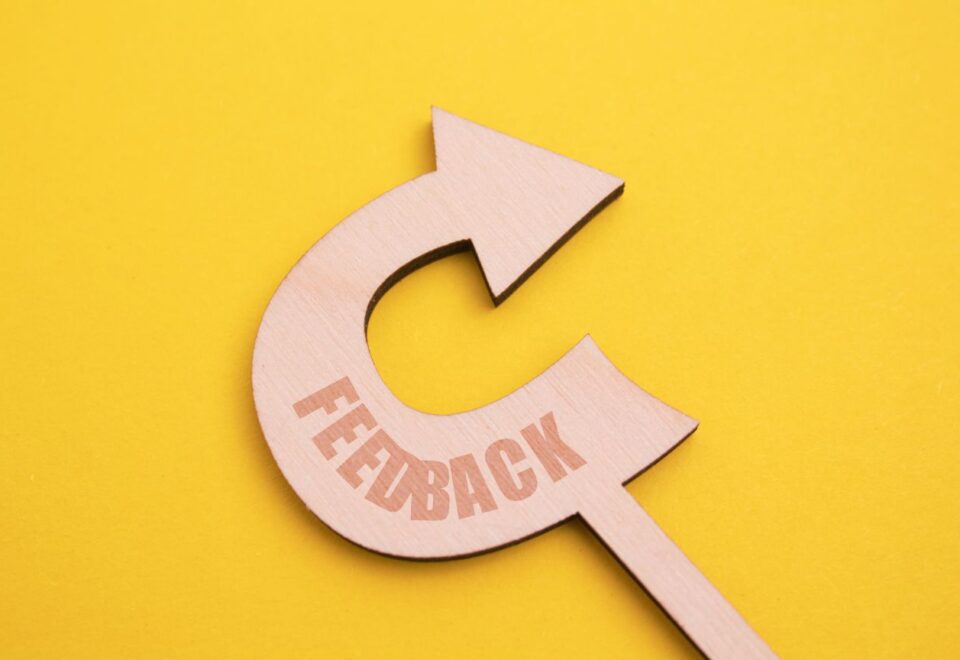In the realm of organizational leadership, the role of an Executive Director stands as a pinnacle of responsibility and vision. Aspiring to guide companies and nonprofits towards greatness, the path to securing this esteemed position requires exceptional skills and adeptness in acing the challenging interview process. In this comprehensive guide to interviewing well, we delve into the heart of executive directorship interviews, uncovering the 12 most common and probing questions that candidates are likely to encounter.
From inquiries that gauge strategic thinking and crisis management prowess to those that delve into leadership philosophy and adaptability in today’s dynamic business landscape, each question serves as a litmus test for potential leaders. By understanding the nuances of these questions and formulating strategic responses, you’ll be primed to showcase your qualifications, experience, and unwavering commitment to steering organizations toward enduring success. Join us as we unravel the art of mastering executive director interviews and positioning yourself as the ideal, qualified candidate for this paramount role.
1. How Do You Define Your Leadership Style and Philosophy?
When asked about your leadership style and philosophy, the interviewer wants to gain insight into how you approach leading a team and what principles guide your actions. Start by mentioning the key components of your leadership style, such as your communication approach, how you motivate and empower your team, and your overall attitude toward leadership. Emphasize the values that drive your leadership decisions, like integrity, collaboration, or empathy. Highlight any experiences or mentors that have influenced your style. Avoid buzzwords and be genuine in your response, ensuring your style aligns with the organization’s culture and values.
Example Answer: “My leadership style is anchored in transformational leadership. I believe in inspiring and empowering my team to reach their potential through open communication and shared vision. I prioritize building strong relationships, fostering creativity, and encouraging continuous growth. One of my guiding philosophies is servant leadership, where I prioritize my team’s and organization’s needs above my own. This approach encourages a sense of ownership and shared responsibility, leading to high engagement and a unified pursuit of goals.”
2. Can You Share a Challenging Situation You’ve Successfully Managed and Explain Your Approach?
This question assesses your problem-solving abilities, resilience, and decision-making process. Choose a challenging situation that demonstrates your leadership qualities, such as adaptability, effective communication, and strategic thinking. Describe the situation concisely, highlighting the challenges you faced. Then, explain your approach in detail – how you analyzed the situation, involved the team, made decisions, and executed your strategy. Focus on collaboration, resource allocation, and your ability to stay composed under pressure. Conclude by sharing the positive outcome and the lessons you learned from the experience.
Example Answer: “In a time-sensitive project, we encountered unexpected technical issues that threatened delivery. As a leader, I demonstrated my approach as suitable for executive directors. I initiated daily cross-functional meetings to promote open communication and collective problem-solving. I assigned tasks aligned with team members’ strengths, providing consistent feedback to ensure cohesion. By fostering teamwork, we efficiently resolved the issues and even delivered the project ahead of schedule. This experience highlighted the significance of adaptability, collaboration, and a solution-oriented mindset, critical for effective executive directors.”
3. What Strategies Would You Implement to Drive Long-Term Success for Our Organization?
This question assesses your strategic thinking and alignment with the organization’s goals. Start by acknowledging the company’s current strengths and identifying areas for growth. Mention your intention to create a robust strategic plan that leverages these strengths and addresses weaknesses. Highlight your commitment to fostering innovation, continuous improvement, and employee development. Mention strategies like cross-functional collaboration, market analysis, and setting measurable goals. Tailor your response to the organization’s industry and mission.
Example Answer: “I believe in a multi-faceted approach to drive long-term success. Firstly, I’d thoroughly analyze our organization’s strengths and opportunities for growth. I’d then create a strategic plan that leverages these strengths and mitigates weaknesses. The regular market analysis would ensure we remain competitive and adaptable. I’d emphasize employee development through training programs and mentoring, promoting innovation and new ideas. By setting measurable goals and fostering a culture of continuous improvement, we’d be on a path to sustainable success.”
Want to excel in your executive director interview and land your dream leadership role?
Contact Growth Hackers
4. How Do You Foster a Culture of Collaboration and Teamwork Within Your Staff?
Creating a culture of collaboration is pivotal for organizational success. Start by highlighting the significance of teamwork and how it contributes to higher productivity and innovative solutions. Share your approach to fostering collaboration, such as regular team meetings, cross-functional projects, and creating open communication channels. Mention your emphasis on recognizing and valuing individual contributions within the context of team achievements. Emphasize trust-building and creating an environment where diverse perspectives are welcomed.
Example Answer: “I firmly believe that a culture of collaboration is the cornerstone of a thriving organization. I promote this by establishing open lines of communication, encouraging regular team meetings, and initiating cross-functional projects that leverage diverse skill sets. I ensure that team members understand their roles within the larger context so that individual achievements are celebrated about team success. By creating an environment where every voice is heard and valued, I’ve witnessed firsthand how collaboration leads to increased productivity, more creative solutions, and a stronger sense of unity.”
5. Describe Your Experience in Managing Budgets and Allocating Resources Effectively.
Effectively managing budgets and resources is crucial for achieving organizational goals. Explain your experience by referencing a specific instance where you successfully managed budgets. Discuss how you assessed needs, allocated resources efficiently, and monitored spending to ensure financial sustainability. Highlight any strategies you used to optimize resource allocation while maintaining quality. Stress your ability to prioritize initiatives based on their potential impact on the organization’s bottom line.
Example Answer: “In my previous executive director role, I managed a substantial budget for a critical project. I began by conducting a comprehensive analysis of each expense category, identifying areas where we could optimize spending without compromising quality. I used a zero-based budgeting approach to allocate resources according to strategic priorities. Regular monitoring allowed us to stay within budget while achieving project milestones effectively. This experience reinforced the importance of meticulous planning, ongoing evaluation, and aligning resource allocation with the organization’s overarching goals.”
6. How Do You Navigate and Lead Through Changes in the Business Landscape?
Adapting to changes in the business landscape requires a strategic approach. Begin by acknowledging the inevitability of change and its impact on the organization. Discuss your method of staying informed about industry trends and competitive shifts. Explain how you lead your team through changes by fostering a culture of adaptability and resilience. Mention your approach to communicating changes transparently, involving team members in decision-making, and providing the necessary resources for a smooth transition.
Example Answer: “Change is a constant in the business landscape, and I firmly believe in being proactive rather than reactive. I adopted a startup mindset, I stay updated on industry trends and competitive shifts, which equips me to make informed decisions. To lead my team through changes, I foster a culture of adaptability by encouraging ongoing learning and embracing new opportunities. I ensure transparent communication, sharing the rationale behind changes and the anticipated impact on the organization. By involving team members in decision-making and providing the necessary support, I’ve witnessed successful transitions that maintain morale and keep the team focused on our collective goals.”
7. How Would You Build and Maintain Strong Relationships With Stakeholders and the Community?
Building relationships with stakeholders and the community is vital for organizational growth. Start by emphasizing the importance of these connections in achieving shared objectives. Discuss your approach to building relationships by actively engaging with stakeholders through regular meetings, feedback sessions, and collaborative initiatives. Mention your commitment to understanding their needs and expectations. Highlight your involvement in community events and initiatives that showcase the nonprofit organization’s name’s values and contributions.
Example Answer: “I recognize that strong relationships with stakeholders and the community are integral to our success. I prioritize open and transparent communication to build these connections, regularly engaging with stakeholders to understand their needs and expectations. I proactively seek their input and involve them in decision-making processes, fostering a sense of ownership. Additionally, I believe in active community engagement through participation in events and initiatives that align with our nonprofit organization’s mission and values. By demonstrating our commitment and contributing positively to the community, we build strong relationships and enhance our reputation and impact.”
8. Share an Example of an Ethical Dilemma You’ve Faced and How You Resolved It.
Ethical dilemmas test your values and decision-making process. Begin by acknowledging the significance of ethical considerations in leadership. Describe your ethical dilemma, providing context and detailing the conflicting values or interests involved. Explain the steps you took to address the situation, including analyzing potential outcomes, seeking advice, and making a well-informed decision aligned with your ethical principles. Emphasize the positive impact of your decision and any lessons you gained from the experience.
Example Answer: “Ethical dilemmas are pivotal moments that require a steadfast commitment to one’s values. In a situation where financial gains could be achieved through inaccurate reporting, I chose the ethical path. I conducted thorough research, seeking advice from mentors and industry experts to evaluate the potential consequences. Eventually, I presented accurate data transparently, along with the potential risks. This decision led to establishing trust and credibility, reinforcing our commitment to integrity. This experience taught me that ethical decisions may not always be the easiest, but they are paramount in maintaining a strong moral compass and fostering long-term relationships.”
Prepare for success – ace your executive director interview with the help of our experts now!
9. What Initiatives Have You Led to Promote Innovation and Drive Organizational Growth?
Innovation and growth are essential for staying competitive. Begin by highlighting the importance of innovation in responding to evolving market demands. Discuss specific initiatives you’ve led, such as establishing cross-functional innovation teams, implementing idea-sharing platforms, or encouraging a culture of experimentation. Describe the impact of these initiatives on driving innovation and contributing to the organization’s growth. Emphasize your commitment to continuous improvement and willingness to embrace change.
Example Answer: “Innovation is a catalyst for growth, and I’m committed to fostering a culture that embraces new ideas. I initiated cross-functional innovation teams that met regularly to brainstorm and implement creative solutions. This led to the developing of innovative products and processes that significantly contributed to revenue growth. Additionally, I encouraged employees to share their ideas through digital platforms, allowing for diverse perspectives. By promoting experimentation and celebrating successful innovations, I’ve witnessed how a culture of innovation can drive organizational growth and maintain a competitive edge.”
10. How Do You Ensure Your Vision and Strategies Are Communicated Clearly Across the Organization?
Clear communication is key to achieving organizational alignment. Begin by emphasizing the importance of a shared vision and the role of effective communication in translating strategies into action. Discuss your approach to communication, which may include regular town hall meetings, interactive workshops, and clear written communication. Explain how you tailor your communication to various audiences within the organization, ensuring everyone understands the goals and their role in achieving them. Highlight your commitment to feedback loops and open channels for questions and suggestions.
Example Answer: “Ensuring a shared vision and strategy requires unwavering communication. I initiate regular town hall meetings to communicate overarching goals, ensuring everyone understands the bigger picture. I also facilitate interactive workshops where teams can contribute insights and suggestions, fostering a sense of ownership. I use written communication to cater to diverse learning styles to provide detailed strategy breakdowns. Additionally, I create open channels for questions and feedback, promoting transparency and clarity. By continuously refining communication methods and actively seeking input, I ensure that board members understand and embrace our vision at all levels of the organization.”
11. What Steps Do You Take to Continually Improve Your Leadership Skills?
Continuous improvement is integral to effective leadership. Begin by expressing your commitment to personal and professional growth. Discuss your learning approach, such as reading leadership literature, attending relevant workshops and conferences, and seeking mentorship. Describe instances where you’ve applied new skills or knowledge to enhance your leadership effectiveness. Emphasize your ability to learn from both successes and challenges and how you proactively seek feedback to refine your skills.
Example Answer: “I firmly believe that leaders are learners. To continually improve my leadership skills, I dedicate time to reading leadership literature and attending workshops and conferences that offer fresh perspectives. I actively seek mentors who can provide guidance and insights from their experiences. I embrace opportunities to apply new skills, whether a novel communication technique or a refined approach to conflict resolution. I recognize that learning isn’t limited to successes; I’ve also gained valuable insights from challenges. Feedback is a crucial part of my improvement journey, and I actively seek it from colleagues, mentors, and team members to refine my leadership approach.”
12. Can You Describe a Situation Where You Resolved Team Conflicts and Maintained Motivation?
Conflict resolution and maintaining motivation are core aspects of effective leadership. Begin by acknowledging that conflicts are inevitable but manageable. Describe a specific situation where team members had differing viewpoints or goals. Explain your approach to addressing the conflict, such as initiating one-on-one conversations, facilitating open dialogue, and seeking common ground. Share how you maintained team motivation by emphasizing shared objectives and the importance of collaboration. Conclude with the positive outcome and the lasting impact of your approach on team dynamics.
Example: “In a project, two team members had conflicting viewpoints impeding progress. I recognized that addressing the conflict was pivotal to maintaining motivation and achieving our goals. I initiated private discussions with each team member to understand their perspectives and concerns. I facilitated an open dialogue during a team meeting where both parties shared their viewpoints. By actively listening and seeking common ground, we developed a solution that incorporated the strengths of each perspective. I maintained team motivation by emphasizing our shared objectives and the value of collaboration in achieving them. This approach resolved the conflict and strengthened team cohesion, and set a precedent for respectful communication.”
Final Words on Most Common Executive Director Interview Questions
Navigating executive director job interviews requires addressing key aspects of the executive director job description. The right executive director candidate responds authentically to strategic planning, team leadership, and organizational vision questions. Demonstrating experience and skills through concrete examples captures hiring managers’ attention, while confidence and adaptability underline executive director roles. Thorough preparation and practice with a colleague enhance interview performance, leaving a lasting impression on chief executive officers and the job interview panel. Job interviews demand clear communication and insights into executive director candidates’ abilities, making strategic responses crucial in securing leadership roles.
Growth Hackers is a terrific growth hacking firm helping businesses from all over the world grow. There is no fluff with Growth Hackers. We help entrepreneurs and business owners secure their company’s future by hiring the right executive director, increase their productivity, generate qualified leads, optimize their conversion rate, gather and analyze data analytics, acquire and retain users and increase sales. We go further than brand awareness and exposure. We make sure that the strategies we implement move the needle so your business grow, strive and succeed. If you too want your business to reach new heights, contact Growth Hackers today so we can discuss about your brand and create a custom growth plan for you. You’re just one click away to skyrocket your business.










